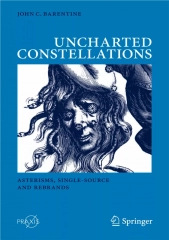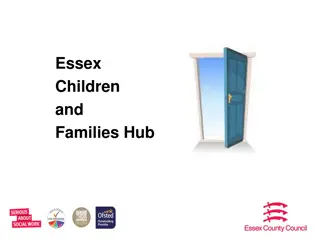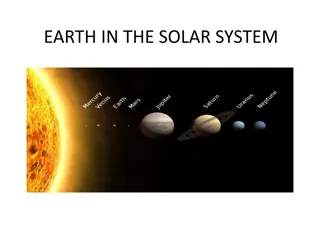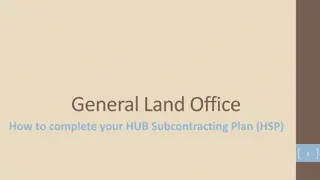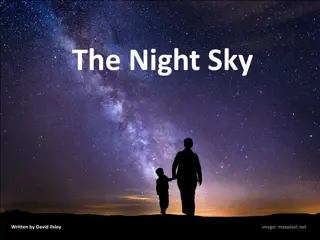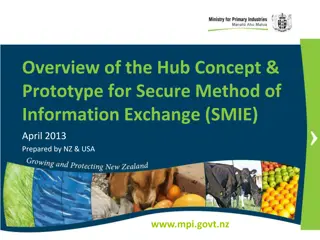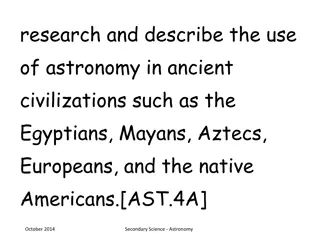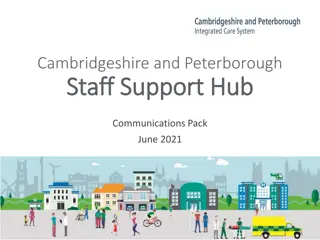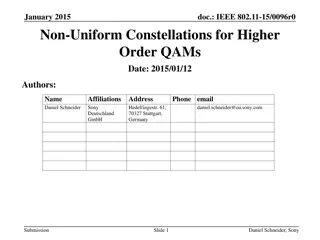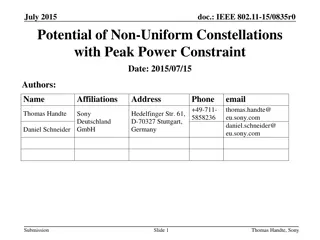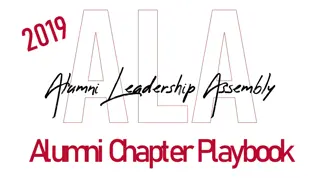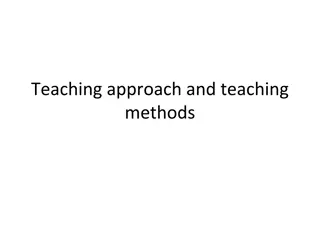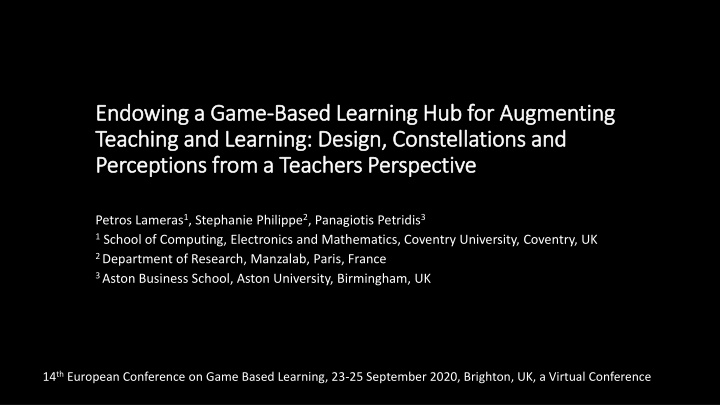
Game-Based Learning Hub for Teachers: Research Insights
Explore teachers' perceptions and approaches to utilizing a Game-Based Learning (GBL) hub for enhancing teaching practices. This study delves into the design, constellations, and perspectives from a teacher's viewpoint, shedding light on the integration of digital pedagogies with GBL tools.
Uploaded on | 0 Views
Download Presentation

Please find below an Image/Link to download the presentation.
The content on the website is provided AS IS for your information and personal use only. It may not be sold, licensed, or shared on other websites without obtaining consent from the author. If you encounter any issues during the download, it is possible that the publisher has removed the file from their server.
You are allowed to download the files provided on this website for personal or commercial use, subject to the condition that they are used lawfully. All files are the property of their respective owners.
The content on the website is provided AS IS for your information and personal use only. It may not be sold, licensed, or shared on other websites without obtaining consent from the author.
E N D
Presentation Transcript
Endowing a Game Endowing a Game- -Based Learning Hub for Augmenting Based Learning Hub for Augmenting Teaching and Learning: Design, Constellations and Teaching and Learning: Design, Constellations and Perceptions from a Teachers Perspective Perceptions from a Teachers Perspective Petros Lameras1, Stephanie Philippe2, Panagiotis Petridis3 1School of Computing, Electronics and Mathematics, Coventry University, Coventry, UK 2 Department of Research, Manzalab, Paris, France 3 Aston Business School, Aston University, Birmingham, UK 14th European Conference on Game Based Learning, 23-25 September 2020, Brighton, UK, a Virtual Conference
Rationale Research questions GBL hub interface Research design Results Mapping perceptions of GBL with approaches to using the GBL hub Conclusions Outline
Rationale There is consensus that GBL integrates and combines constructivist learning theories with game-like elements as means to provide self- regulated, goal-centred, creative and situated learning experiences Teachers perceptions of and approaches to using learning technologies and digital pedagogies are not investigated systematically and comprehensively Teachers may feel overwhelmed about the plethora of GBL tools, processes and strategies that exist on the Web, with no indications on how to search and access GBL that is relevant to subject-content, pedagogy and student profile
Research Questions What are teachers perceptions of teaching using GBL? How teachers perceptions of GBL impact approaches to using a digital hub as means to inform practice?
GBL hub interface This section presents the last articles, news or video clips published. This section offers a selection of recommended contents for every user thanks to an algorithm. This section gives you access to all the contents (video clips, games, flashcards, articles, etc.). It also shows the level of progression for every theme.
Eighteen secondary education teachers were recruited for this study. 5 were teaching mathematics, 3 physics, 2 biology, 5 languages, 2 history and 1 sociology. Participants were drawn from a wide geographical range from countries such as Germany (n=6), Denmark (n=6) and Romania (n=6). The data collection process started by encouraging participants to complete a questionnaire as a data- driven method for delimiting perceptions of GBL in their teaching context What GBL means to you? , In what ways GBL may improve the design and delivery of teaching? how would you perceive a platform for accessing and retrieving GBL content? would discern relationships between espoused theories and theories in use. Research design
Results Teachers perceptions of GBL Theme A: Helping students to register and retain knowledge into memory: It was perceived that game-based learning can help students memorise and retain knowledge and content- knowledge in more engaging ways: Students can remember things better. For example, monopoly is a game that can help students memorise and retain knowledge (Teacher 3) Theme B: Helping students to gain improved understanding of the topic: In this theme, game-based learning was conceived as using GBL for gaining improved understandings of certain learning situations (Teacher 1) Theme C: Attaining an in-game learning goal: Game-based learning was correlated with a learning outcome or goal that the student / player needed to achieve: Game play needs to lead to a learning outcome (Teacher 5) Theme D: Developing a sense of constructive competition: Game-based learning was seen as a medium for competitive learning The challenge with games is that it often become a competition, which I have mixed feelings about, and I like it, but it can also intimidate some students. I would like to use games that trigger reflection and analytical thinking than competitiveness
Results Teachers approaches to using a GBL hub Theme A: searching, accessing and organising GBL resources: An essential aspect of the platform is to be able to provide gamified learning content effortless: Finding a game presenting the facts of World War 2 easily without having to search for a long time (Teacher 2). Theme B: Discovering GBL resources for creative use: lesson plans, game design templates, game mechanics discovered for inspiration in creating GBL activities new to the teacher. A GBL design template or a feedback mechanic would help me to come-up with a new idea I haven t tried before (Teacher 1). Theme C: Creating communities of GBL: A community-based structure for supporting teachers to learn, share and provide / receive feedback for using game- based learning resembling processes and practices defined from and approved by the community: possibility for collaboration, communication, incentives to give feedback and ratings as a reward system and for assessing resources made by other [teachers] (Teacher 2).
Mapping perceptions of GBL with approaches to using the GBL hub A: Searching for GBL content B: Discovering GBL for creative use C: Creating GBL communities A: Registering and retaining knowledge Memory games, non-interactive content-based games, gamified slides, books and assignments Content-based games, game designs that focus on content, gamification processes for assessing acquired information Communities around broadcasting, and visualising GBL information and knowledge B: Understanding the topic Applied-based GBL, context-aware games, gamifying a field trip resource Gamified simulations, mobile games, GBL lesson plans performed outside the classroom Communities around applying theory into practice via GBL content C: Attaining a learning goal Trial and error games and gamifying learning outcomes, gamifying grades, virtual rewards Games with scoring elements, victory and loosing conditions; role-playing scenarios, narration mechanics Communities around designing in-game learning goals to GBL, reusing / sharing successful GBL goals D: Developing constructive competition Competition-based GBLs, action games, co-op games, scoring & leader- boards, timer mechanics Creativity-based GBL, game design templates, game engines, collaborative & mechanics, gamified peer-assessment Communities around collaborative GBL teaching. Visual ratings and textual feedback for assessing GBL
This mapping between teachers perceptions of GBL and approaches to using a GBL hub would encourage the design and categorisation of GBL content to align with teachers actual practice most meaningful and relevant to them An interesting study would be to build on these preliminary findings and identify perceptions and dimensions that would be inclusive and hierarchically structured delineating a more developmental set of GBL perceptions and approaches along with their influences for specific disciplines Conclusions

